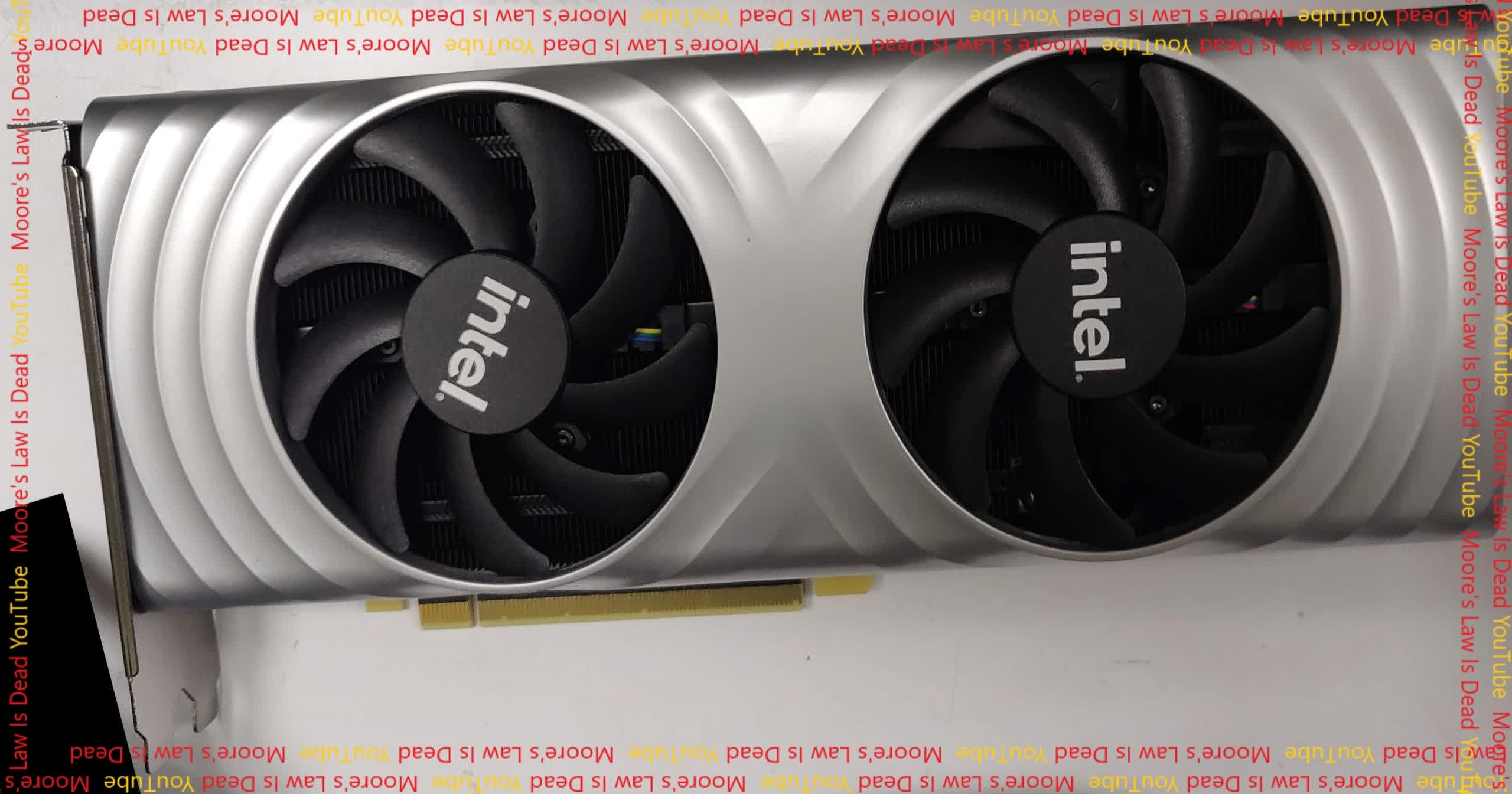Rumor mill: An early sample of Intel's flagship Arc Alchemist GPU has been photographed. It's unclear if Intel intends to sell this reference design or if they've made it for testing purposes, but it's a good-looker anyhow, and an interesting insight into the development of the GPU.
If you've been following the Arc Alchemist leaks, then the photos might look familiar. The YouTuber that published them, Moore's Law Is Dead, also published photos of an earlier prototype that had a similar shape but a black shroud and a green PCB a few months ago. The design is also similar to the DG1 SDV, which is somewhat of a precursor to the Arc Alchemist series.
Moore's Law Is Dead says that the photos come from a reliable source that's worked with him for a long time. Although Moore's Law Is Dead sometimes makes incorrect claims about product specifications, the photos he publishes are accurate more often than not.
According to his source, the photos are of Intel's 512 EU model, which was first leaked over two years ago. Recent rumors say that it could perform similarly to the Nvidia RTX 3070 Ti and the AMD RX 6800.

On the front of the card are two fans that push air down onto the PCB through black metal fins and out through the vents on the back, which is all standard. The card is slightly taller than its mounting bracket, which means that it's sized to the full-width and full-height PCIe specification.
On the side of the card are an 8-pin and a 6-pin power connector. Combined, they can provide up to 225W. It could draw an additional 75W from the motherboard if it needed to, but it's rare for GPUs that are hooked up to the power supply to do so.
Moore's Law Is Dead also claims to have seen photos of the entry-level Arc Alchemist GPU, which has 128 EU. He produced the rough renders below.

The card is suspected to have a TDP of less than 75W and hence draws all its power from the motherboard. It's also rumored to be about as fast as a GTX 1660 Ti.
Intel isn't expected to launch their Arc Alchemist GPUs until early next year, possibly in February. But they're already busy drumming up excitement with competitions and demos of their new supersampling technology, XeSS.
